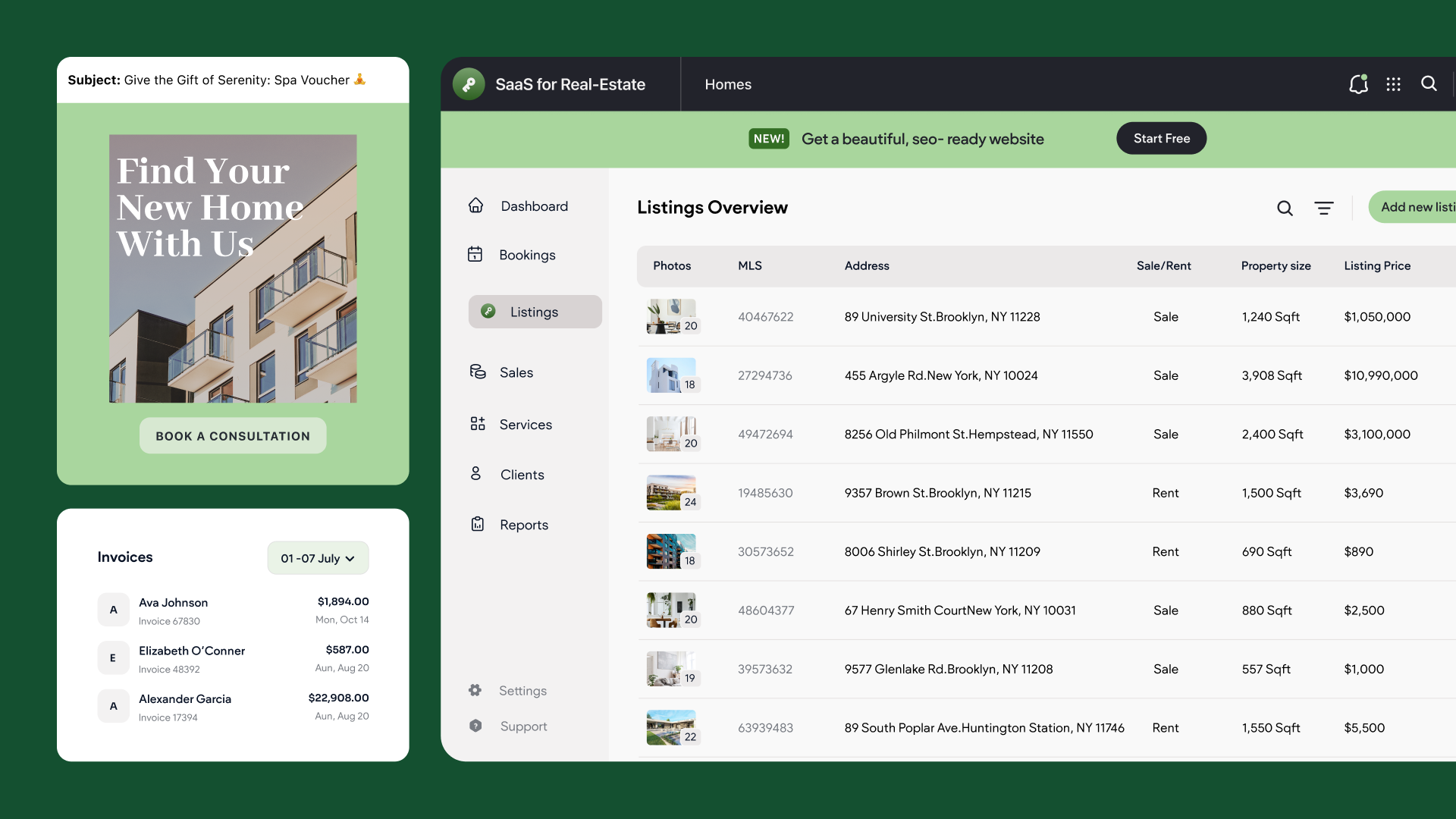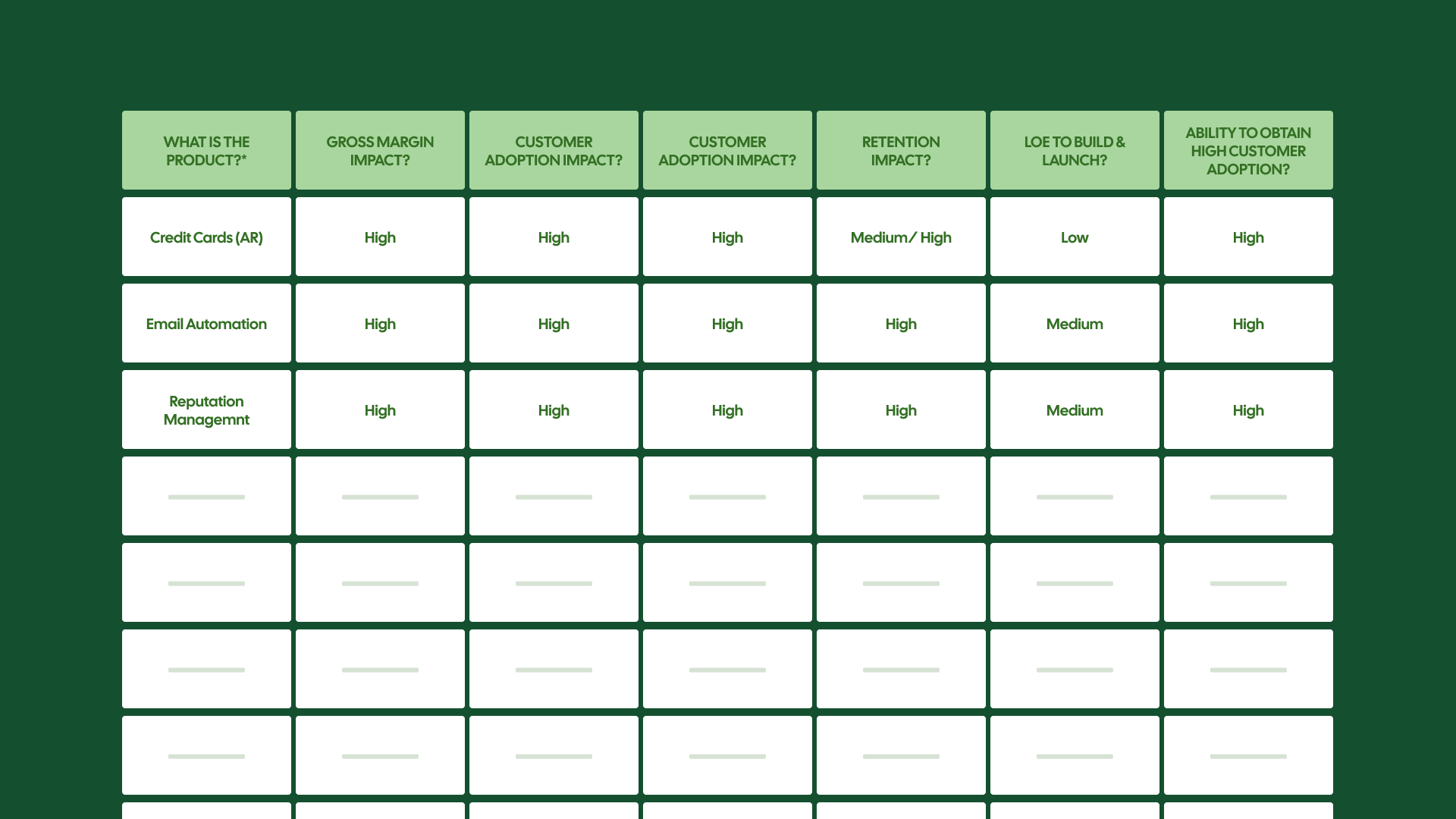This blog post has been adapted from content presented during “Panel Discussion: How to Build a Winning Multi-Product Strategy & Conquer Your Niche.” A recording of the complete webinar session is available
on
YouTube.
Vertical SaaS is a burgeoning segment of the overall software industry, and for good reason. These companies possess a sort of "north star" that horizontal SaaS companies, despite focusing on a broad range of customers rather than a laser-focused niche, lack. In short, it's depth over breadth. As small and medium-sized businesses (SMBs) become increasingly interested in automating specific aspects of their operations, they are continuing to seek software that is uniquely tailored to their particular industry pain points.
However, while vertical SaaS is certainly having a moment, growth isn’t free. Tidemark, a prominent growth equity firm, has written extensively in their
Vertical SaaS Knowledge Project (VSKP) about what “frontiers [are] possible” in this space. They’ve identified three areas of expansion: Win the Category, Expand Offerings, and Extend Through the Chain.
Tidemark defines winning the category as “owning the control point and scaling locations.” In layman’s terms, a control point would be the last piece of software your customer turns off before heading home.
The “Win” stage is valuable but beyond the scope of this article. If you’d like to learn more, I’d encourage you to browse the VSKP, starting with their article on
picking the right market.
Instead, we’re going to focus on the “Expand” portion. Expansion is a unique benefit of operating in the verticalized SaaS space. As a boutique piece of software, vertical SaaS can create additional, complimentary products that empower their niche—hence “multi-product.”
Identify expansion areas
Multi-product expansion comes in two flavors. You can either offer a product that aims to make new customer segments accessible, or you can offer a product that further entrenches current customers. While the former can increase your total addressable market (TAM), the later can increase your
net revenue retention (NRR) as well as your growth and profitability—in addition to your TAM.
Seems like a clear choice, right? Creating additional value for existing customers is an obvious winner.
Step one is identifying what new product makes the most sense for your niche. This is easier said than done. You’ll need to put in the time to understand your customer’s business completely. From the moment they get to work to the moment they leave, what are they doing?
Take, for example, a plumbing business. Our imaginary SaaS company has developed a verticalized tool that tracks clients, appointments, warranties, completed work, and various other plumbing-related client management needs.
While this software is incredibly useful, their customers have additional business requirements that aren’t being met yet. They’re marketing their services, ordering equipment, taking payments, accepting appointments online, managing vehicles, dispatching plumbers—and so much more. These are all expansion areas!
Once you’ve identified expansion areas in your own vertical, the next step is picking the right one to actually build.
Pick the right product
There are numerous areas for expansion within any given vertical SaaS company, but not all of them make sense right now—and some may never make sense. Like any well-informed decision, you'll need to weigh the pros and cons.
One way to kickstart the process is to examine the software your customers are currently using. Ershad Jamil, the former Chief Growth Officer at Service Titan, refers to this as the "Pool of Merchant Spend." What else is your customer paying for besides your product, and could you offer a superior experience?
Consider payments, for instance. Regardless of the vertical you operate in, it's highly likely that your customers are processing payments. Even more probable is that these payments are influencing data within your product. Would developing a lightweight payment solution provide more value than a more robust offering if it is seamlessly integrated with your software? It likely would.
This is because the integration itself delivers a superior experience. It eliminates the need for employees to manually reconcile payments with their primary ledger—your software—and generally streamlines their operations.
Of course, you need to consider the business implications of any additional products. Factors like ARR impact, likelihood of customer adoption, likelihood of retention, impact on overall retention, cost to build, time to launch, etc., all weigh into whether or not a new product will be successful.
Once you’ve landed on a new product that aligns with your business, the next step is to actually ship it.
Build, partner, or buy
At this stage, you should have an in-depth understanding of your customer's business, knowing their operations like the back of your hand. You've pinpointed their pain points, assessed potential solutions, and determined the next complementary product for your company. Now, the pivotal question arises: how are you going to bring it to market?
As a SaaS company, your first instinct may be to build it but, unfortunately, that doesn’t always make sense. Just because you can do something doesn’t mean you should. Occasionally, it may make more sense to partner with another company—or even buy them outright.
Jason Richards, VP of Strategy and Corporate Development at Cloudbeds, has been down this road before. Cloudbeds offers a comprehensive and integrated suite of hospitality products, but it wasn’t always this way. They began as a humble booking engine for SMBs who, at the time, were relying on spreadsheets.
Richards said that, when the time came to identify additional offerings, Cloudbeds created the “platform decision matrix” framework to guide the “build, partner, buy” decision. Some of the questions they’re asking, as part of that matrix, is:
- How much competitive differentiation they’ll get out of this new product?
- How mature is this product, category, or marketplace?
- Is this part of their core competency?
- How long will it take to implement?
- How will it impact their competitive positioning?
- How much will it cost?
- What’s the risk?
Let’s think back to our plumbing SaaS. Appointment scheduling is one of features of their core product, so an obvious clear extension may be a website product that empowers plumbing clients to schedule their own appointments. While building a website appointment widget is well within this company’s core competency, websites are not. Furthermore, the website building space itself is incredibly mature. That means it would be difficult and costly to create a compelling product. With that in mind, websites would be a good candidate for
partnering.
What about the employees out on the field? Mobile access to your control point via an app with additional field-oriented features would be a highly appreciated product that makes plenty of sense to build in-house.
Rinse, repeat
You’re not going to dominate your vertical with just one complimentary product. It’s not a “dual-product” strategy, after all. After a successful launch, which should include a well planned go-to-market strategy as well as intelligent pricing and packaging, it’s time to hit the drawing board all over again.
Each additional product you add to your portfolio deserves even more consideration than the last. Your company has limited resources and every product includes a meaningful opportunity cost. Additionally, your customers have a limited appetite for software. With those two factors in mind, you should be judicious in your decisions to avoid overwhelming either your customers or your team.
For a more in depth discussion on this topic, take a look at
How to Build a Winning Multi-Product Strategy & Conquer Your Niche, a panel discussion featuring Jason Richards and Ershad Jamil as well as Tidemark’s Andrew Walsh and Duda’s Itai Sadan. The hour-long webinar is available for free
on YouTube.









